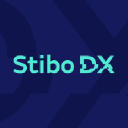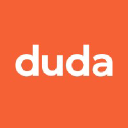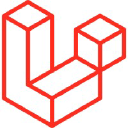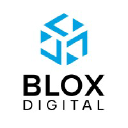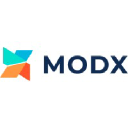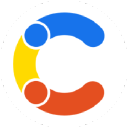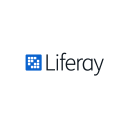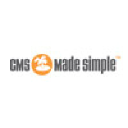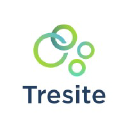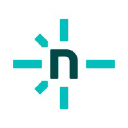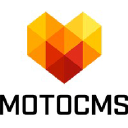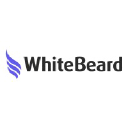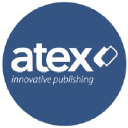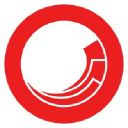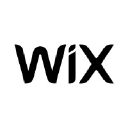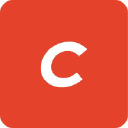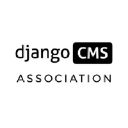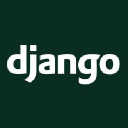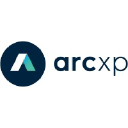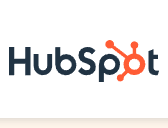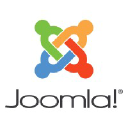
Locomotive CMS
LocomotiveCMS Overview
LocomotiveCMS is a headless content management system (CMS) designed for developers and content editors. It offers the following key features:
- Flexible content modeling
- Powerful templating system
- Multi-site capabilities
- Developer-friendly APIs
- User-friendly back-office interface
Pricing
LocomotiveCMS provides three pricing plans:
| Plan | Price | Features |
|---|---|---|
| Free | $0/month |
|
| Standard | $19/month |
|
| Premium | $99/month |
|
Key Benefits
- Flexible content modeling: Create custom content types and fields to structure your data.
- Powerful templating system: Use Liquid templating language to build dynamic pages and components.
- Multi-site capabilities: Manage multiple websites from a single LocomotiveCMS instance.
- Developer-friendly APIs: Access your content through REST and GraphQL APIs for easy integration with other systems.
- User-friendly back-office interface: Empower content editors with an intuitive and customizable back-office interface.
Getting Started
To get started with LocomotiveCMS: 1. Sign up for an account on the LocomotiveCMS website. 2. Choose a pricing plan that suits your needs. 3. Set up your first site and start creating content types and pages. 4. Customize your site's design using the templating system. 5. Access your content through the provided APIs or the back-office interface.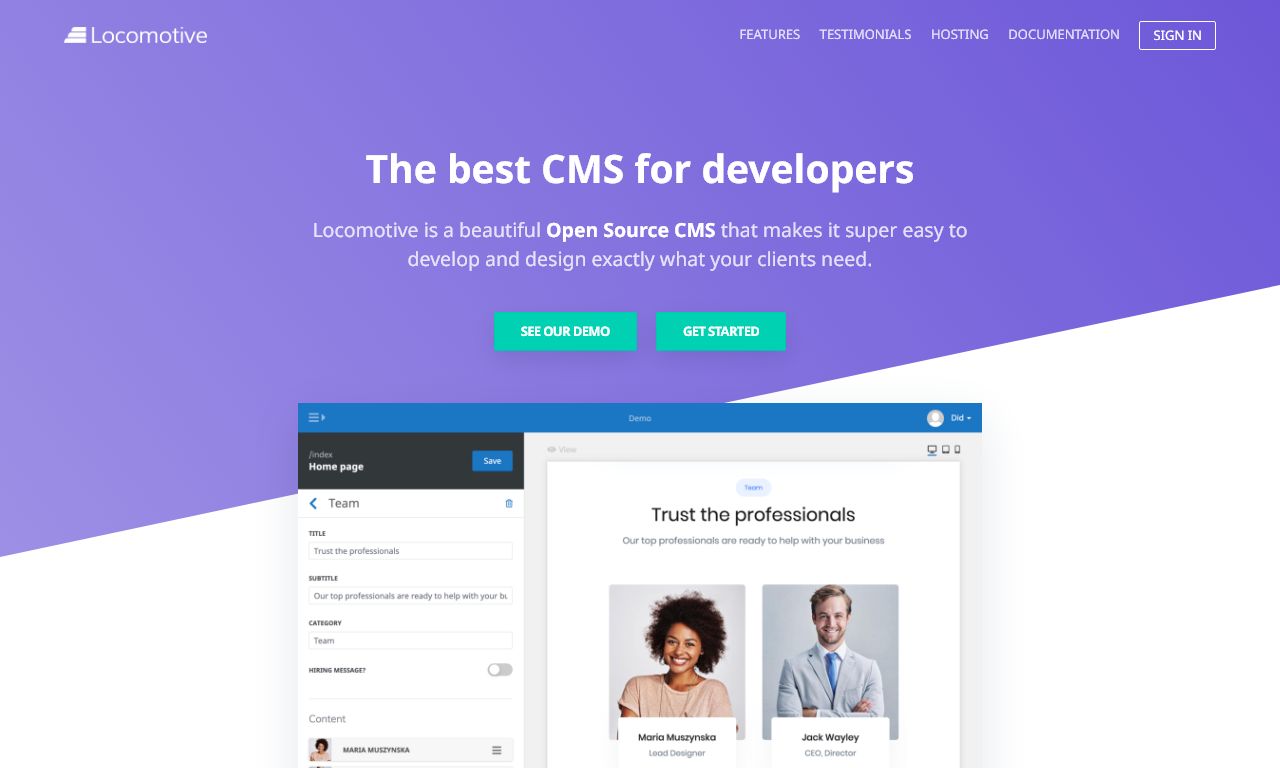
Locomotive CMS
Locomotive CMS, a Ruby-powered content management system, offers a unique approach to website creation and management.
This review explores its features, strengths, and potential drawbacks to help you determine if it's the right fit for your web development needs.
1. Overview and purpose of the CMS
Locomotive CMS is an open-source content management system designed for Ruby on Rails developers.
It aims to provide a flexible and customizable platform for building and managing websites with a focus on developer-friendly workflows.
The CMS emphasizes content-first development and supports both static site generation and dynamic content delivery.
2. User interface and ease of use
Locomotive CMS features a clean and intuitive user interface, designed for both developers and content editors.
The admin panel offers a drag-and-drop page builder for easy content creation and management.
However, the system's learning curve may be steeper for non-technical users compared to some other CMS platforms.
3. Content creation and editing tools
The CMS provides a range of tools for content creation, including a WYSIWYG editor and support for Markdown.
Users can create and manage various content types, including pages, blog posts, and custom content models.
The platform also supports inline editing, allowing users to make changes directly on the live site.
4. Asset management capabilities
Locomotive CMS includes a built-in asset manager for handling images, documents, and other media files.
The system supports drag-and-drop uploads and automatic image resizing for improved performance.
Assets can be organized into folders and tagged for easy categorization and retrieval.
5. Customization and extensibility options
As a Ruby-based CMS, Locomotive offers extensive customization options for developers familiar with the language.
The platform supports custom Liquid templates and allows for the creation of custom content types and fields.
Developers can extend functionality through Ruby gems and custom plugins.
6. SEO features and optimization tools
Locomotive CMS includes basic SEO features such as customizable meta tags and URL structures.
The platform generates XML sitemaps automatically and supports the creation of 301 redirects.
However, more advanced SEO tools may require additional plugins or custom development.
7. Security measures and user management
The CMS implements standard security practices, including user authentication and role-based access control.
Regular security updates are provided through the Ruby on Rails framework and Locomotive CMS community.
Users can define custom roles and permissions to control access to different areas of the admin panel.
8. Performance and scalability
Locomotive CMS offers good performance due to its support for both static site generation and dynamic content delivery.
The platform can handle high-traffic websites when properly configured and hosted on suitable infrastructure.
Caching mechanisms are built-in to improve load times and reduce server load.
9. Integration with third-party tools and services
The CMS supports integration with various third-party services through its API and custom development options.
Common integrations include payment gateways, marketing automation tools, and analytics platforms.
However, the availability of pre-built integrations may be more limited compared to some other CMS platforms.
10. Pricing and support options
Locomotive CMS is open-source and free to use, with no licensing fees required.
Hosting and support costs may vary depending on the chosen provider and requirements.
Professional support and custom development services are available through the Locomotive CMS website.
11. Mobile responsiveness and multi-device support
Locomotive CMS offers responsive design capabilities out of the box, ensuring websites adapt to various screen sizes and devices.
Developers can create custom responsive templates using Liquid and CSS frameworks like Bootstrap or Foundation.
The admin panel is also mobile-friendly, allowing content editors to manage the site on-the-go.
12. Multilingual capabilities and localization features
The CMS provides built-in support for multilingual websites, allowing content to be managed in multiple languages.
Locomotive CMS uses a localization system that enables easy translation of static text and dynamic content.
URL structures can be customized for each language, improving SEO for multilingual sites.
13. Workflow management and collaboration tools
Locomotive CMS includes basic workflow management features, such as content drafts and scheduled publishing.
Collaboration is facilitated through user roles and permissions, allowing teams to work together efficiently.
However, advanced workflow features may require custom development or third-party integrations.
14. Version control and content revision history
The platform offers built-in version control for content, allowing users to track changes and revert to previous versions if needed.
Content revision history is maintained for all pages and custom content types.
Developers can also use Git for version control of templates and code.
15. Analytics and reporting functionalities
Locomotive CMS does not include built-in analytics tools, but it can be easily integrated with popular services like Google Analytics.
Custom reporting functionalities can be developed using the CMS's API and Ruby on Rails framework.
Third-party analytics plugins may be available through the Locomotive CMS community.
16. E-commerce capabilities
While Locomotive CMS is not primarily designed for e-commerce, it can be extended to support online stores.
Integration with e-commerce platforms like Shopify or Spree Commerce is possible through custom development.
Basic e-commerce functionality can be implemented using custom content types and third-party payment gateways.
17. Compliance with accessibility standards
Locomotive CMS provides a foundation for creating accessible websites that comply with WCAG guidelines.
Developers can implement accessibility features through custom templates and styling.
The CMS community offers resources and plugins to enhance accessibility compliance.
18. Documentation and learning resources
Locomotive CMS provides comprehensive documentation covering installation, configuration, and development topics.
The community offers tutorials, screencasts, and code examples to help developers get started.
However, learning resources may be less extensive compared to more popular CMS platforms.
19. Community support and ecosystem
Locomotive CMS has a dedicated community of developers and users who contribute to its growth and improvement.
Support is available through GitHub discussions, forums, and social media channels.
The ecosystem includes various plugins and themes, although the selection may be more limited than larger CMS platforms.
20. Migration tools and processes from other platforms
Locomotive CMS does not offer built-in migration tools for importing content from other CMS platforms.
Migration from other systems typically requires custom scripts or manual content transfer.
Developers can leverage the CMS's API and Ruby on Rails framework to create custom migration solutions.
Locomotive CMS offers a powerful and flexible solution for Ruby on Rails developers seeking a content-first approach to website development.
While it may have a steeper learning curve for non-technical users, its extensive customization options and performance capabilities make it an attractive choice for developers and agencies building complex, high-traffic websites.
As with any CMS selection, carefully consider your specific needs and technical expertise when evaluating Locomotive CMS for your next project.
Website:


